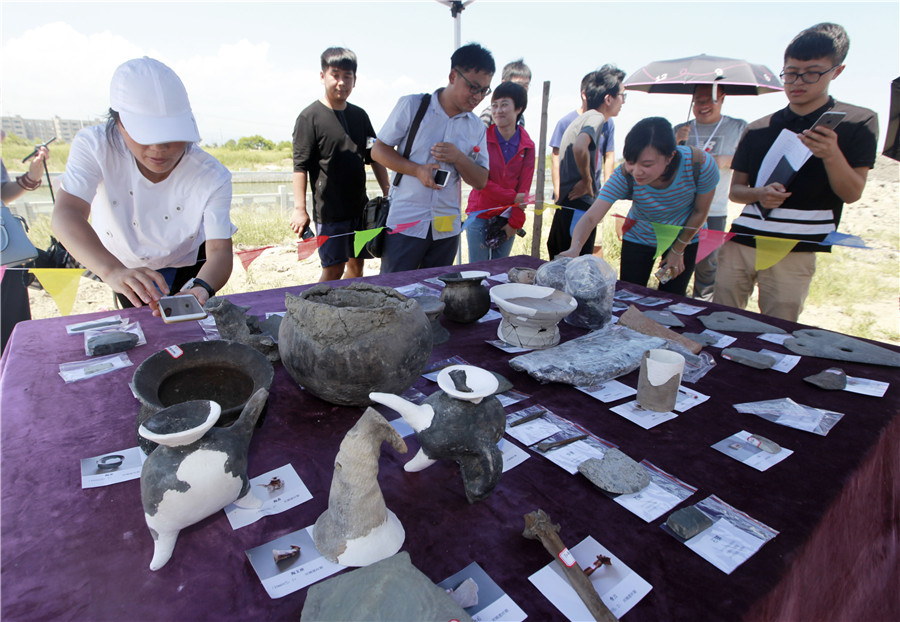Remains of prehistoric culture discovered in Ningbo

People take photos of relics at an exhibition of archaeological achievements at the Xiawangdu historic site in Fenghua district of Ningbo city in East China's Zhejiang province on Sept 6. [Photo by Zhang Yongtao/Aasianewsphoto]
The archaeological excavation of the Xiawangdu historic site in Fenghua district of Ningbo city in East China's Zhejiang province yielded great results, as was announced on Sept 6.
The historic site, covering an area of 9,500 square meters, can be dated back 5,800 years, putting its beginning in the late period of Hemudu culture.
Reports show that the first phase of the excavation covered an area of 3,000 square meters. About 170 remains of the prehistoric period spanning the Song (960-1279) and Yuan (1271-1368) dynasties have been cleaned out, and more than 320 sets of repairable relics were unearthed.
The Xiawangdu site consisted of four cultural layers. In chronological order, they were the Hemudu culture, Liangzhu culture, Shang and Zhou dynasties, and Song and Yuan dynasties.
Experts say the discoveries from the Xiawangdu site are of great significance in studies of history and ancient culture.
The site provides evidence of human activities at the place during the Neolithic era thousands of years ago.
The discovery also provides valuable materials to study various forms of Hemudu culture and the transition of prehistoric civilization over time in the area.

 Print
Print Mail
Mail
 Zhejiang Release
Zhejiang Release Zhejiang News
Zhejiang News